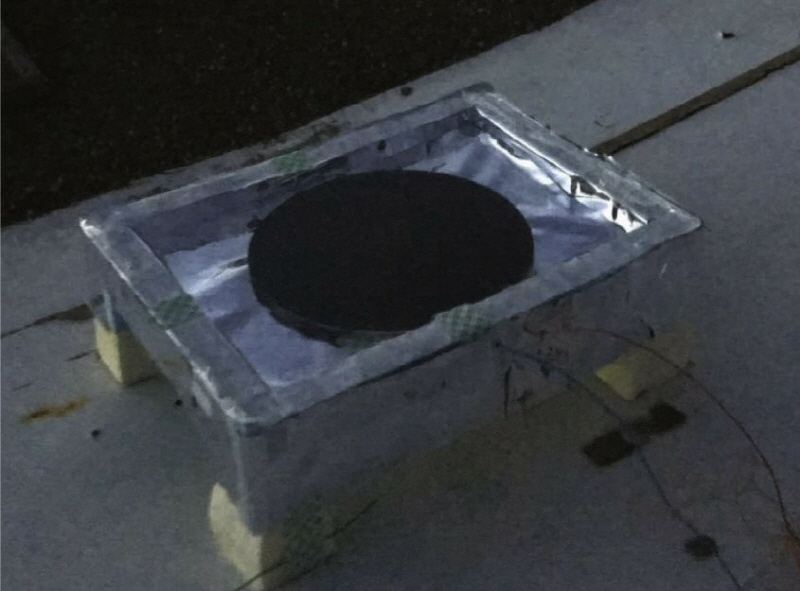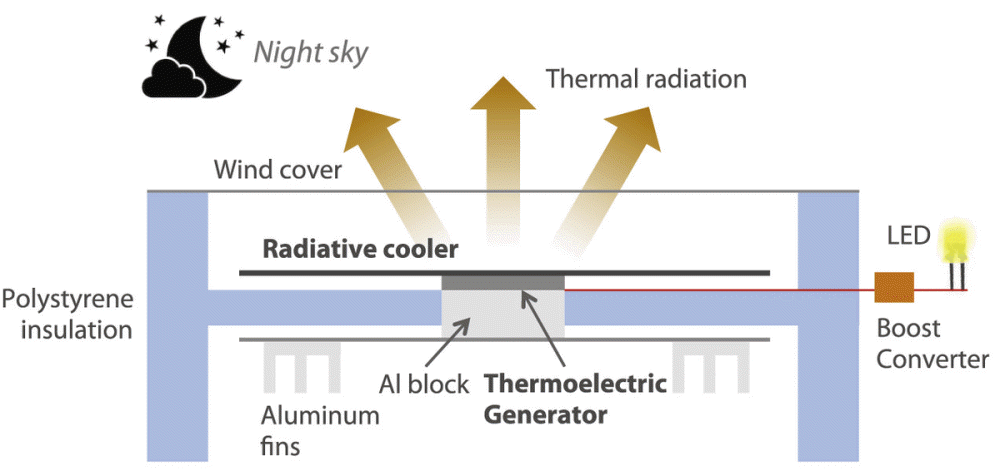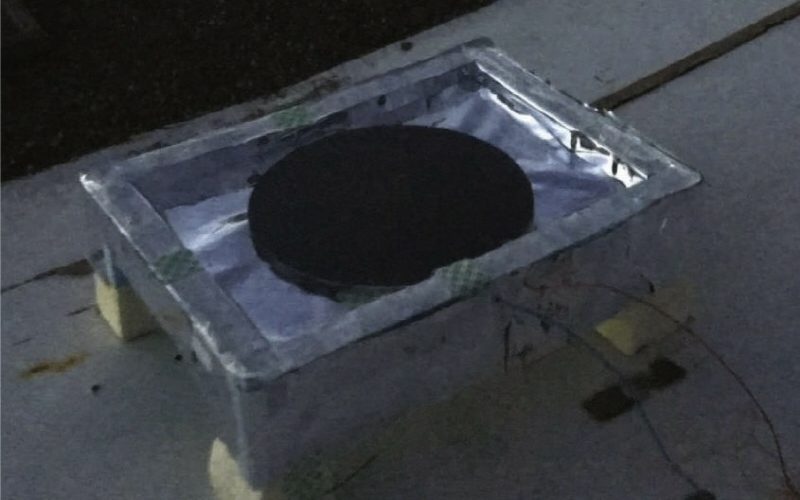
One of the weaknesses of solar power generation is that it cannot generate electricity at night. For this reason, not a few people around the world benefit from night power. To overcome this situation, researchers have discovered a low-cost power generation strategy that uses the space cold by radiative cooling. In fact, the research team is said to have succeeded in turning on the LED lights at night with a device that collected commercial items for only 30,000 won.
Such research was initiated by Aswath P. Raman, University of California, Los Angeles, and Stanford University’s Wei Li and Shanhui Fan. They have been conducting joint research on radiative cooling since 2012. It also co-founded SkyCool Systems to manufacture panels that use radiant cooling to achieve more environmentally friendly cooling and air conditioning. It is said that the use of radiant cooling to generate thermoelectric power at low cost was a secondary idea born through this study.
The power generation device they made is very simple. All the ingredients are commercially available, so high school students can imitate it, and the cost is only about $30. On the ground-side disk installed under the thermoelectric power module with an aluminum box in between, aluminum fins, which are also used in PCs and air conditioner arrangements, are mounted. It radiates heat from the disk on the low temperature side facing the sky and sends it to the heat source on the high temperature side to generate power with a temperature difference. It is said that the heat from the low-temperature disk transmits radiant heat and diffuses into space, as opposed to the solar heat reaching the Earth.

The research team installed the device at a height of 1m from the roof of a building in Stanford, California in December 2017, and began testing at 18:00. The weather was clear and the outside temperature ranged from minus 1 to 3 degrees. As a result of the experiment, the temperature difference between the high-temperature disk and the low-temperature disk was a maximum of 2 degrees, and the output was 0.8 mW, which corresponds to 25 mW/m² with this energy. Of course, the output obtained is at a slight level in terms of power generation ability, but it succeeded in turning on by inserting a booster and connecting an LED. It is said that the luminance was up to 10%.
This is not the first attempt to generate electricity even at night using thermoelectric power elements. Attempts so far have required active heat input. The point of this system is that it is completely passive, and it is believed that it is possible to increase the output to 0.5W/m² with only the existing technology. Originally born from a secondary idea of other research, he explains, the creation of light from the dark suggests that even the coolness of the universe can be seriously treated as a thermodynamic resource for development. Related information can be found here .


















Add comment